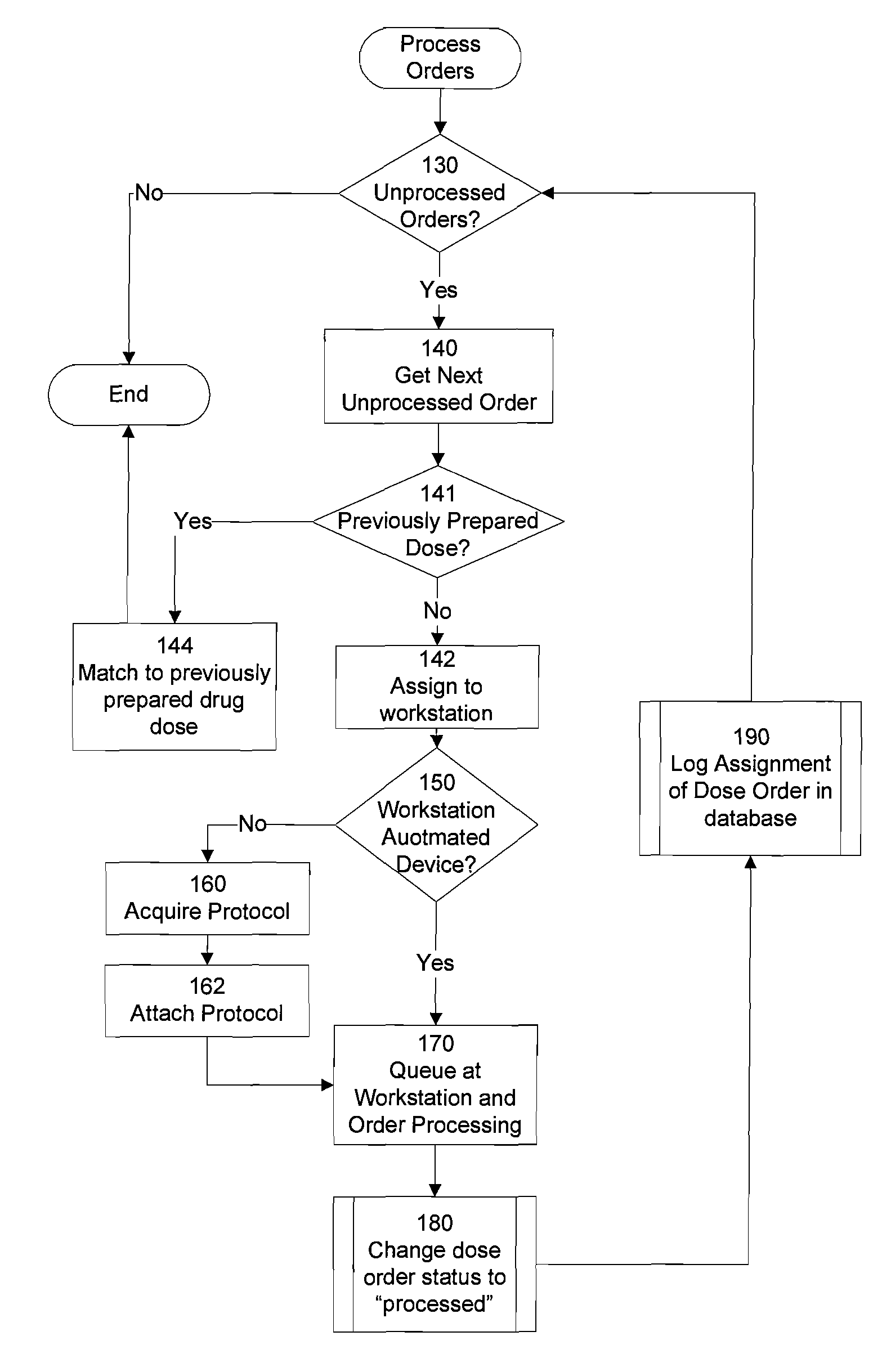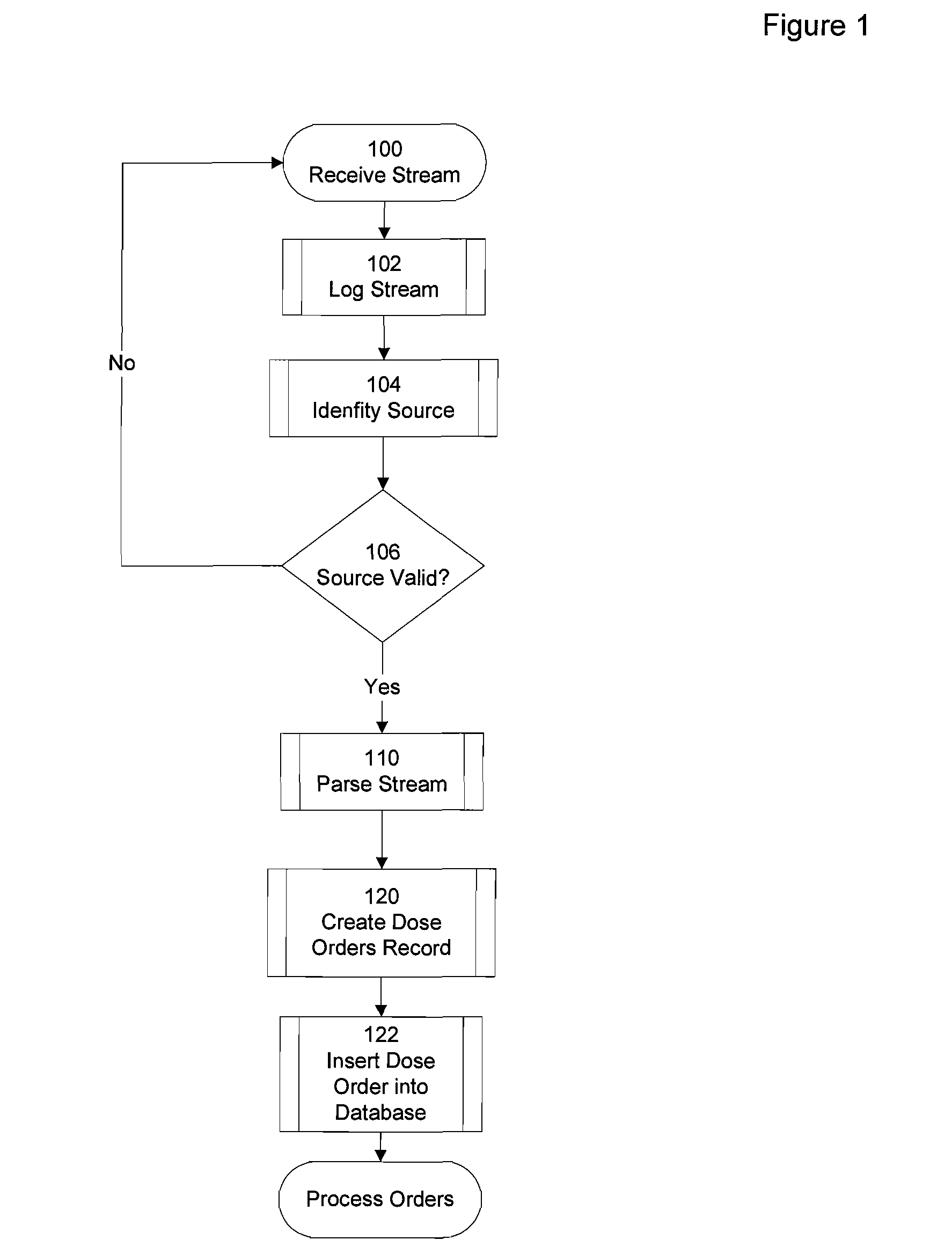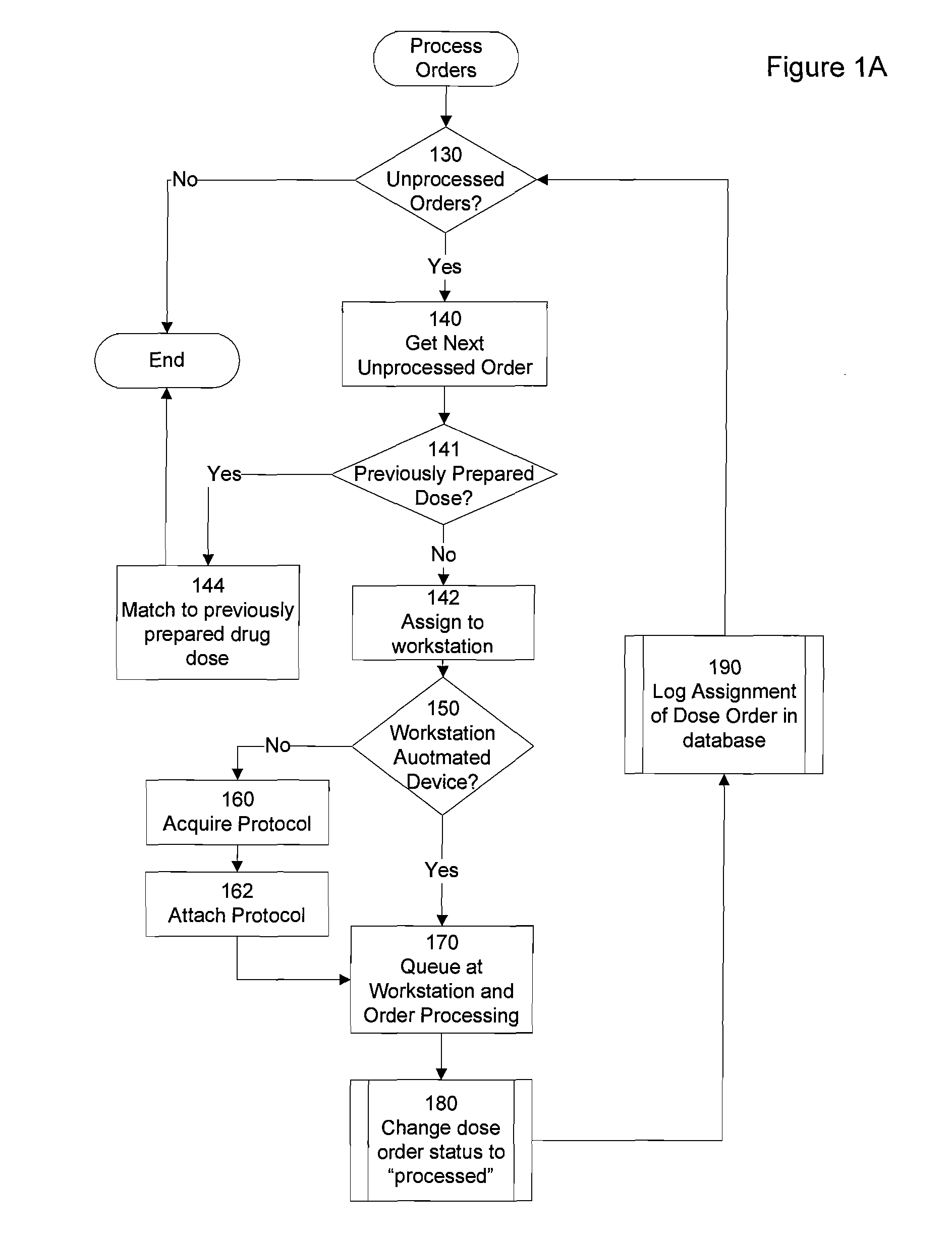There are points in the process that are susceptible to miscommunication or loss of information.
This can be problematic in terms of
logging and auditing the
processing and preparation of medications, which is often mandated by insurance and regulatory requirements.
Additionally, there are inefficiencies associated with the present process and management of medication orders from the point of
origination or to the point of consumption.
However,
pharmacy computer systems do not provide preparation instructions to the sterile products compounding
technician.
These labels lack detailed preparation steps, causing the
technician to rely on his or her memory of the
preparation procedures and guidelines, seek input from a co-worker, or find a manufacturer's
package insert or a written institutional
guideline.
One
hazard of this method is that the
label represents the only
record of the work needing to be performed with the result that, if the
label is lost or damaged, the work may not be performed (that is, the
medication dose order may not be fulfilled) and the omission does not become known until a caregiver complains because they cannot locate the medication, or because a patient experiences an adverse event because of omitted medication.
However, these systems do not manage the distribution of medication dose orders to the various pharmacy workstations at which they are to be prepared, nor do they track the distribution of the completed dose orders to the patient for whom they are intended.
While many medications can be prepared by automated systems containing “built in” knowledge of correct
preparation procedures, there are still large numbers of medication dose orders that require manual preparation, or institutions whose size precludes the incorporation of
automation technology.
Thus, if a clinician receives an order for which he is unaware of the correct procedure for fulfillment, the clinician would have to request assistance, and thereby acknowledge a lack of training for that particular task.
However, seeking training can be a source of embarrassment or be perceived as an undesired
delay, either
scenario providing a potential basis for the clinician to potentially use an improper procedure for the preparation of a particular medication, significantly increasing the possibility of a serious
medication error due to flawed
preparation procedures.
Repeated conduct in this regard can result in “self trained” experience in a manner which is inconsistent with published procedures for handling that medication.
However, there is currently no efficient way to present the relevant excerpt of the manual to the clinician in relation to the particular medication order to be processed.
Furthermore, after a doctor or nurse enters a medication order, determining the status of the order requires manual intervention.
The order must be located, determined if it has been filled, then possibly located somewhere throughout a facility such as a hospital, which can be complicated further as the medication dose is being transferred to the patient or as patients are moved from one location to another (e.g., from the patient's room to
physical therapy or a lab).
Workload management systems for hospitals and sterile products preparation are unsophisticated and incapable of properly managing the process, causing conflicts between the level of
staffing provided and the level of work to be performed.
Finally, delivery of medication dose orders to
patient care areas in a hospital is not well-controlled, sometimes resulting in care-givers
in patient care areas in a hospital being unaware that medication they require for care of a given patient has been delivered to the medication
storage area where they are rendering care.
This can result in lost productivity in the pharmacy and in the
patient care areas while the
pharmacist and the
care giver attempt to sort out whether or not a medication dose order of interest has been completed.
 Login to View More
Login to View More  Login to View More
Login to View More 


